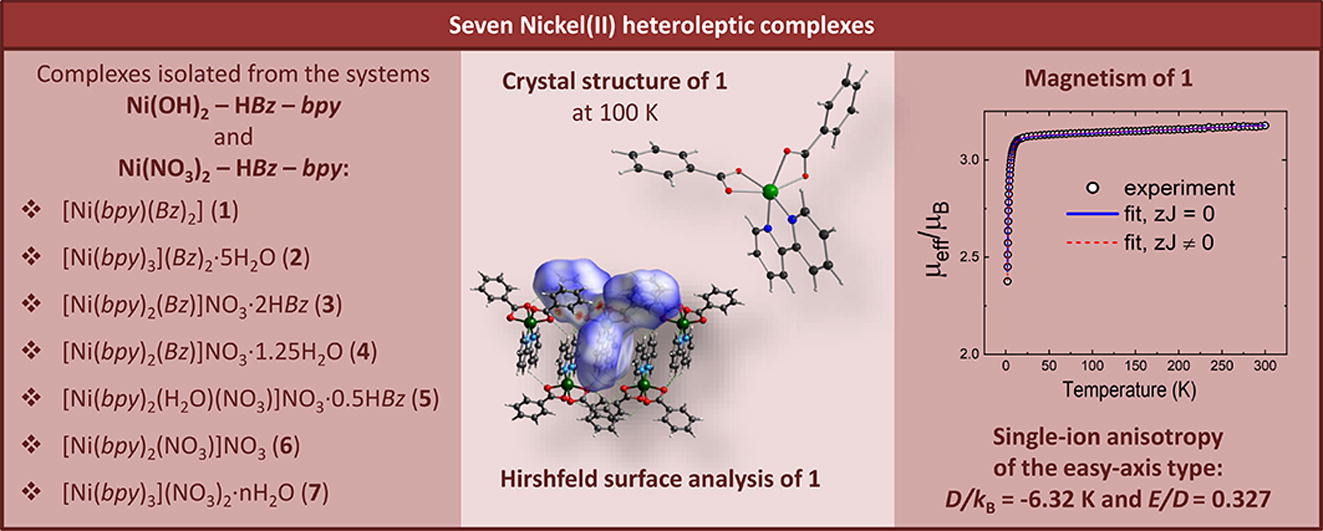Heteroleptic complexes of Ni(II) with 2,2′-bipyridine and benzoato ligands. Magnetic properties of [Ni(bpy)(Bz)2]
Under various experimental conditions seven complexes have been crystallized from the systems Ni(II) – HBz – bpy (HBz = benzoic acid, bpy = 2,2′-bipyridine). The use of freshly prepared Ni(OH)2 as starting reagent leads to isolation of [Ni(bpy)(Bz)2] (1) and [Ni(bpy)3](Bz)2·5H2O (2). On the other hand, the use of nickel(II) nitrate as starting salt yielded 1 and also resulted in the formation of additional complexes in which the nitrate group entered into the final compositions, namely [Ni(bpy)2(Bz)](NO3)·2HBz (3), [Ni(bpy)2(Bz)](NO3)·1.25H2O (4), [Ni(bpy)2(H2O)(NO3)](NO3)·0.5HBz (5), [Ni(bpy)2(NO3)](NO3) (6) and [Ni(bpy)3](NO3)2·nH2O (n = 4.25) (7). The newly prepared complexes were characterized chemically and spectroscopically. The results of X-ray structure analyses of 1, 3–6 have shown that in all complexes, the Ni(II) atoms are hexacoordinated. Complex 1 exhibits a mononuclear molecular structure, while the ionic structures of 3–6 are built up of mononuclear complex cations with a heteroleptic coordination sphere around the Ni(II) atoms and by nitrate anions. In addition, the structures of 3–5 contain HBz solvate molecules or water molecules. The magnetic properties of 1 were studied in the temperature range 1.8–300 K showing that 1 is characterized by the presence of single-ion anisotropy of the easy-axis type with a value of D/kB = −6.32 K and a strong rhombic term with E/D = 0.327. Theoretical calculations using the ORCA package also confirm a significant influence of rhombic anisotropy.

